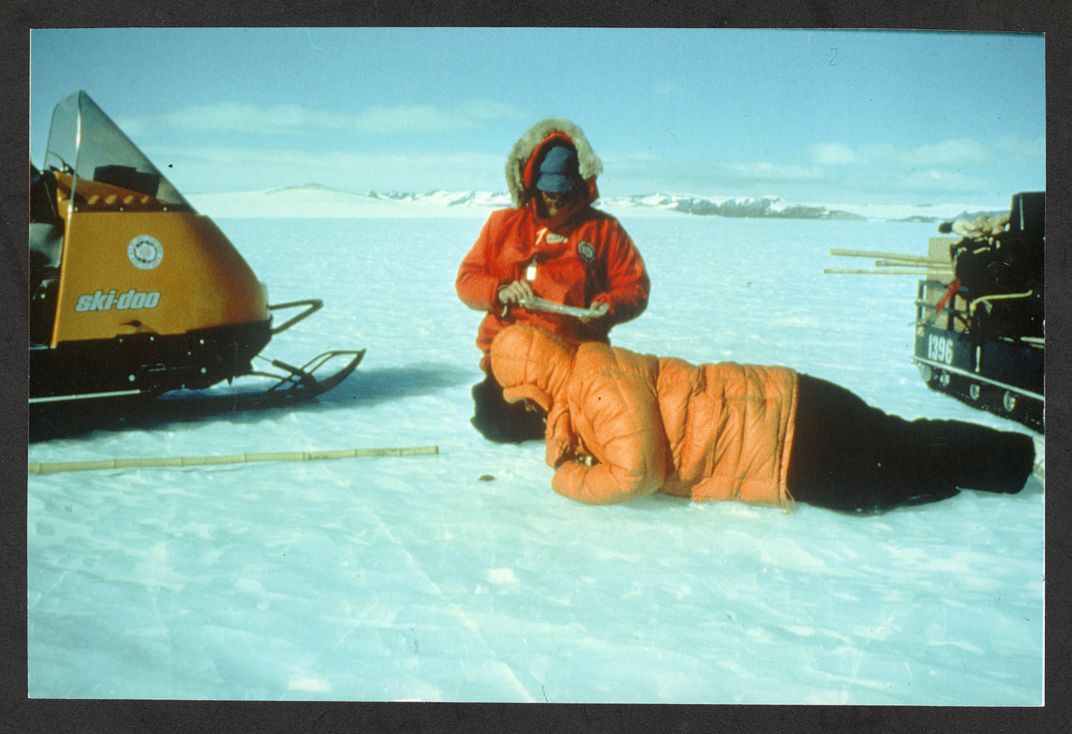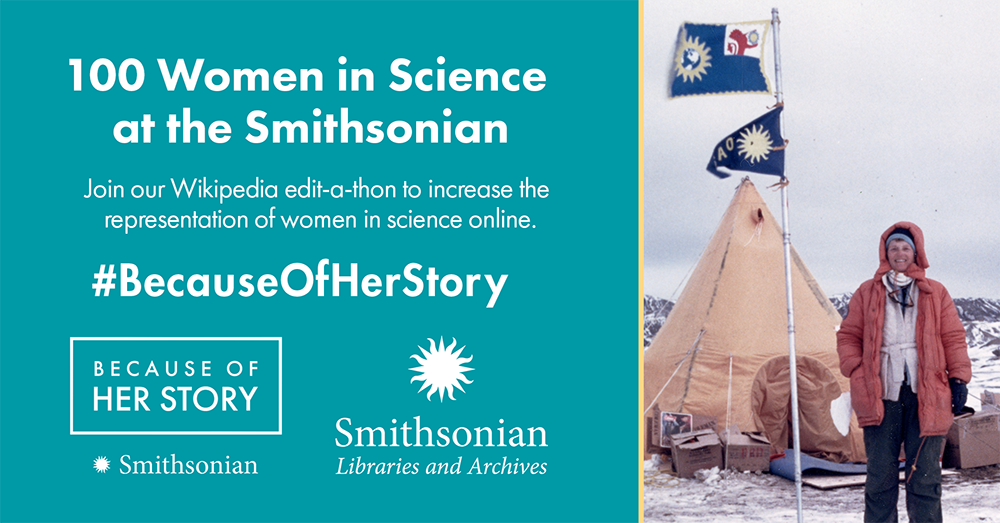SMITHSONIAN LIBRARIES AND ARCHIVES
100 Women in Science in Smithsonian History
We recently added Wikidata profiles about 100 women in science, and we need your help to write and strengthen their Wikipedia articles! Join us for our edit-a-thon January 20th at 1 p.m. ET to learn more about these women in science in Smithsonian history. Beginners and experts are welcome.
/https://tf-cmsv2-smithsonianmag-media.s3.amazonaws.com/filer_public/1f/c6/1fc61f5e-2611-4439-bc47-11a54894af69/sia2021-003906-crop.jpg)
Geologist Dr. Ursula Marvin studied Moon rocks from the Apollo missions and meteorites in Antarctica. Throughout her career with the Smithsonian Astrophysical Observatory, Marvin championed women in science. She delivered lectures about her own experiences as a woman in geology and participated in programing to help advance women’s careers. She was likely inspired to support women colleagues because of challenges she faced. As a college student in the 1940s, Marvin’s geology professor told her to learn to cook rather than pursue a career in geology. Marvin didn’t listen. She became an award-winning scientist with a mountain (Marvin Nunatak) and an asteroid named after her (4309 Marvin).

Remembering stories of women in science is more important than ever. Women are still underrepresented in many scientific fields, and they sometimes face discrimination at the Smithsonian and at other scientific institutions. By ensuring that women’s stories are identified and shared, we remember that women have always played a foundational role in the sciences.
We’ve identified 100 women who helped make the Smithsonian a renowned national scientific institution. Join us on January 20 for a Wikipedia edit-a-thon to help increase the representation of women in science online. We’ll be creating and improving Wikipedia profiles for 100 women discovered through research at the Smithsonian Institution Archives. No prior knowledge of Wikipedia is required to participate.
Wikipedia is consistently one of the top 10 most visited websites globally. Despite that reach, women are still missing from the site. Of the 1.8 million biographies on Wikipedia English, only 19% are about women. The Smithsonian American Women’s History Initiative works to increase the representation of American women from our collections online. Wikipedia edit-a-thons are where public volunteers, Smithsonian curators, archivists, and educators work together to add American women and their important stories to this freely accessible resource.

To share the stories of these 100 notable women in science, we’ve created a Wikidata profile for each scientist. These profiles on Wikidata store information, including any different names the women went by throughout their lifetimes, where they were born, what departments of the Smithsonian they worked for, and what their research focuses were. Information on Wikidata can be used to enhance Wikipedia profiles.
By sharing information about women in science at the Smithsonian on Wikidata, we make raw data available for historians, students, and other researchers to learn more about women in science at the Smithsonian. The datasets already uploaded can help answer important questions:
- What job titles did women doing science hold?
- What specific fields of science were women in involved in throughout the Smithsonian’s history?
- What educational backgrounds did women in science have in the 19th and early 20th centuries?
This data can inspire Smithsonian staff and outside researchers to ask new, complex questions that lead to additional research.
Now that we have added this Wikidata about 100 women in science, we need your help to write and strengthen their Wikipedia articles! Join us for our edit-a-thon January 20th at 1 p.m. ET to learn more about these women in science in Smithsonian history. Beginners and experts are welcome. We will share more about this exciting research and train attendees on how to edit their articles on Wikipedia.
Related Posts:
- Because of Her Story: The Funk List
- Dr. Elizabeth Harmon Uncovers the Histories of Smithsonian Women in Science
- A Legend in Termite Field Biology from Smithsonian Libraries and Archives
